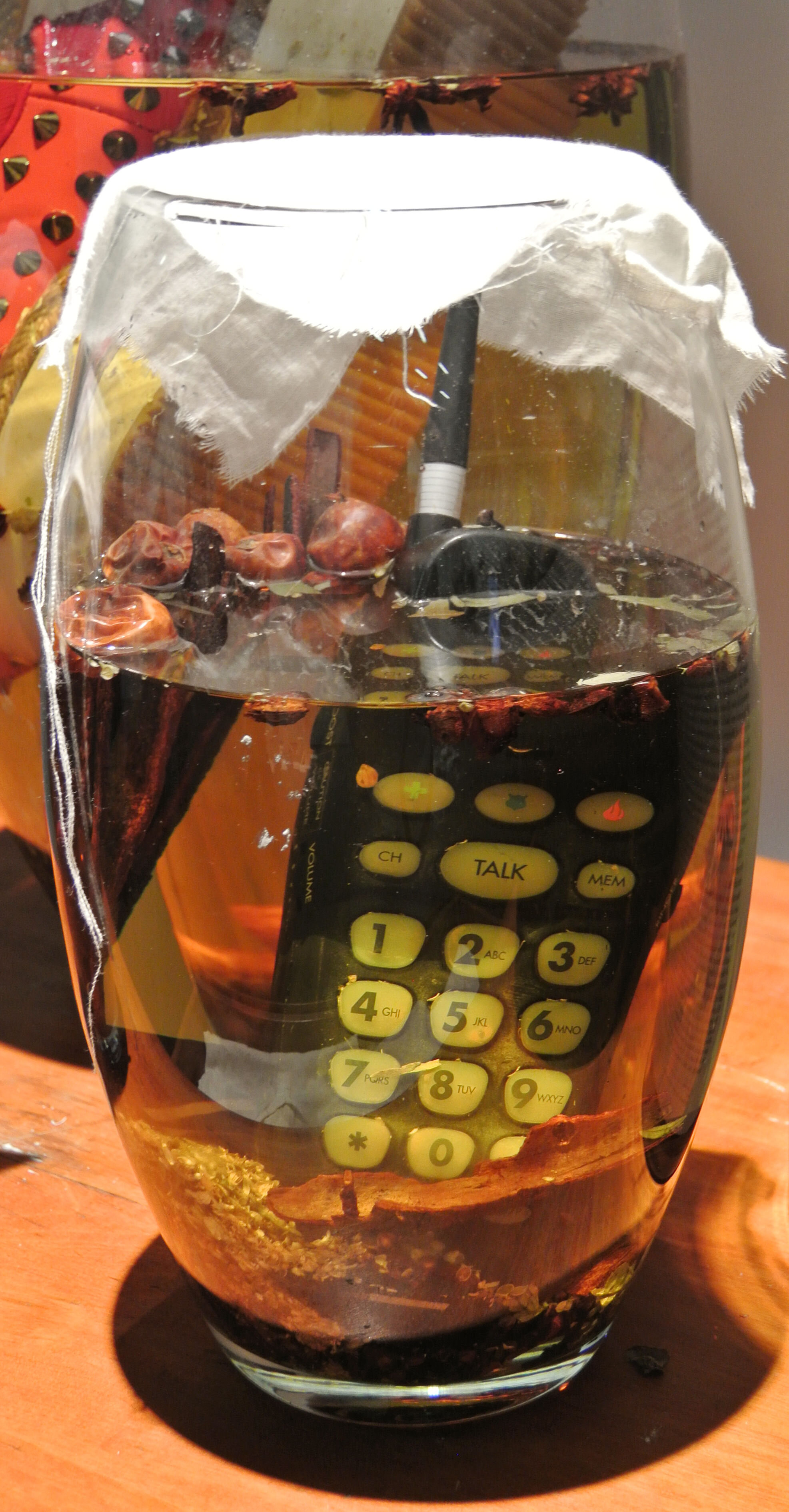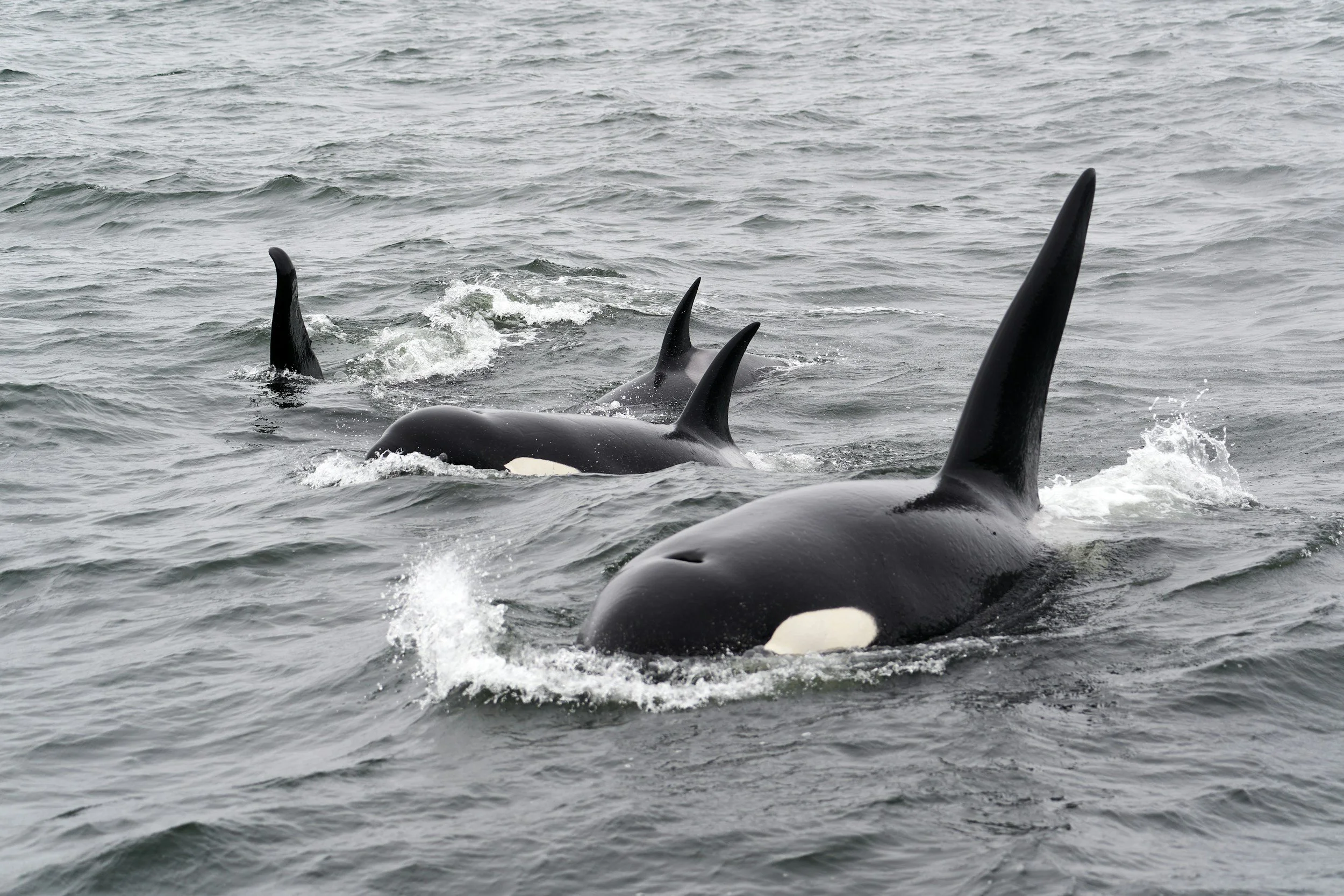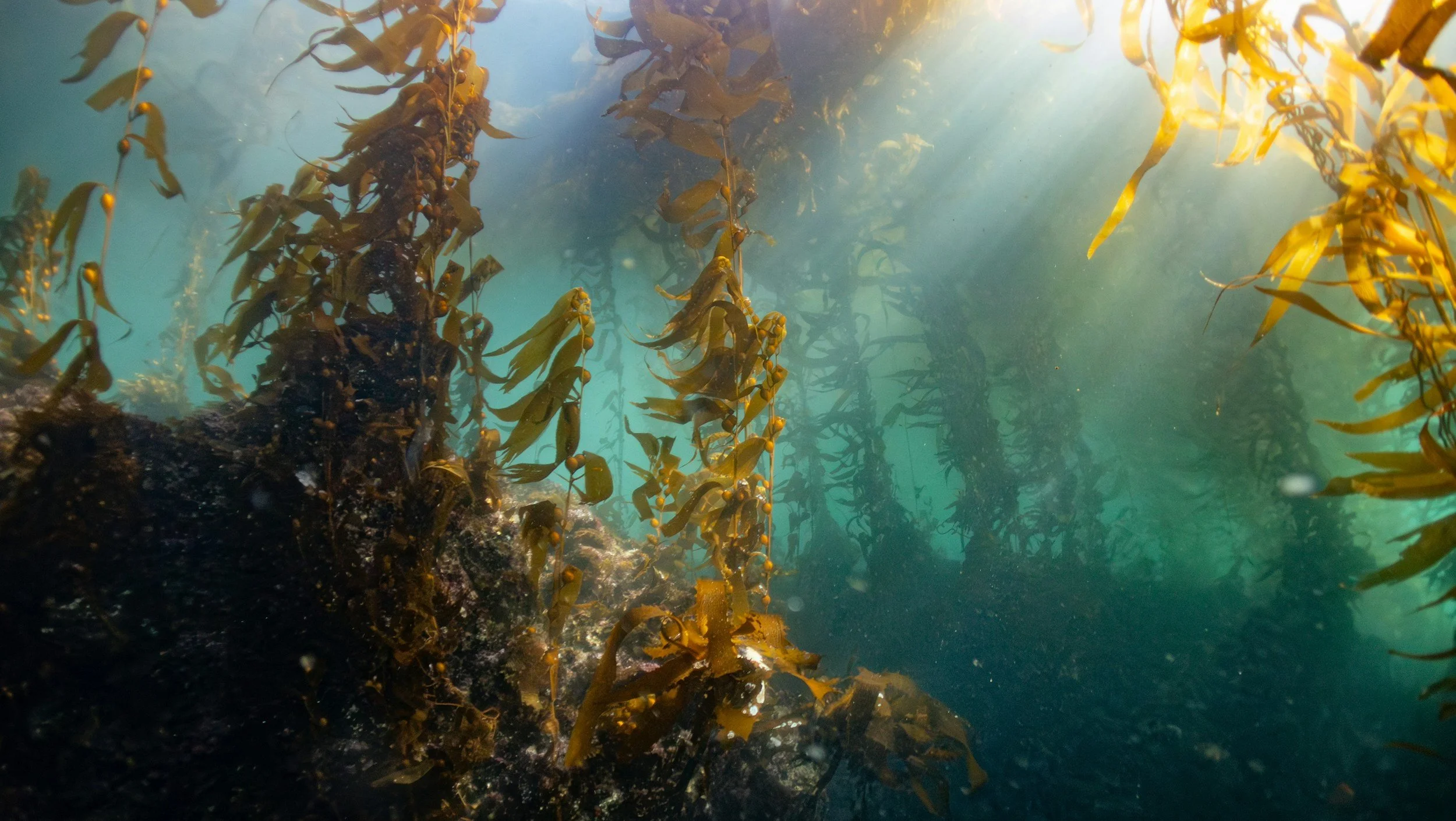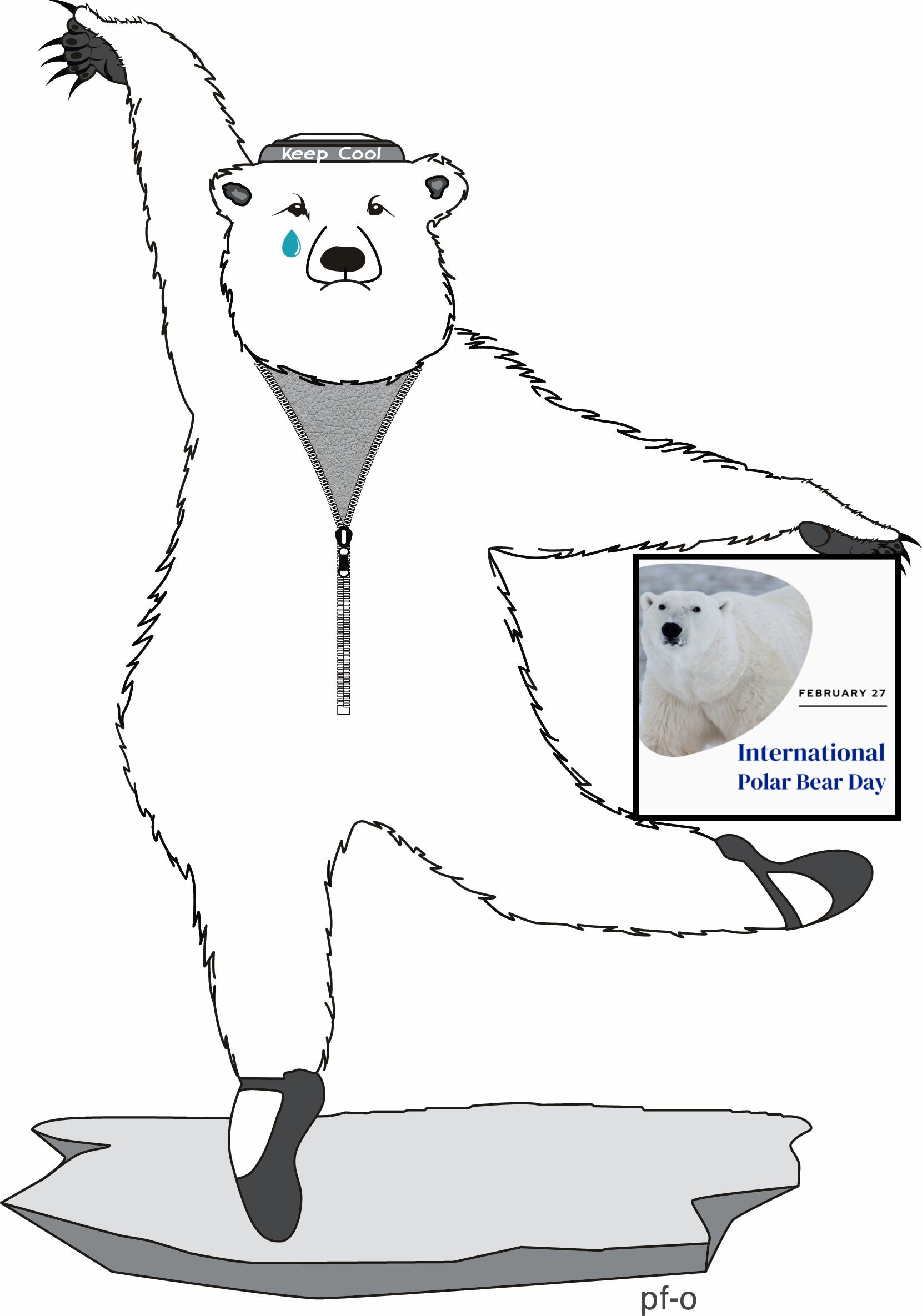
News and Updates
This section features stories that highlight how remarkable yet fragile the ocean is. It also speaks to the connection between humans and the ocean and our responsibility to protect it.
Stories, unless otherwise noted, are written by Pam Ferris-Olson, PhD. Pam has studied ocean creatures, worked in communication, and, as founder of Women Mind the Water, focuses on the relationship between humans and water. Her Wo(men) Mind the Water Artivist Series explores the work of artivists (artists +activists) and their impact in influencing change.
Vaccine Trials Underway in US to Protect Marine Mammals from Avian Flu
Highly pathogenic strain of H5N1 form 20,000+ sea lions in Chile and Peru and 17,000+ southern elephant seal pups in Argentina. Vaccine trial seeks underway to protect health and welfare of marine mammals.
New Prosocial Behavior in Killer Whales Suggests the Importance of Cultural Traditions in Their Survival
Advances in technology have allowed whale researchers to observe new prosocial behaviors such as food sharing and mutual grooming in orca whales. These newly observed cultural behaviors in addition to ‘fish hats’ and boat ramming may have impact on the survival of killer whale populations that exhibit these behaviors and ultimately for the entire species.
Researchers Identify Chemicals From Turf Algae as Cause for Decline in Seaweed Forests
From the Baltic Sea to South Australia and from the Atlantic to the Pacific, researchers are investigating the rapid disappearance of kelp forests, which could have enormous repercussions on ocean health and marine ecosystems. Scientists are employing techniques akin to fingerprint identification to document the causal relationship leading to the loss of kelp forests.
Whales sing about their supper
In a study published in February 2025, researchers monitored whales to learn if their songs could be tied to environmental conditions. The study suggests a relationship does exist and may offers insights into ocean conditions provide resource managers and policymakers with a tool to better protect whales.
Protecting our reefs How they’re doing it in Roatán
When people apply sunscreens containing petrochemicals, the toxins directly or indirectly make their way into the ocean. The top six of these harmful petrochemical are avobenzone, oxybenzone, octinoxate, homosalate, octisalate, and octocrylene. These active ingredients disrupt coral reproduction, contribute to coral bleaching, and cause developmental deformities. In Protecting our coral reefs, how they’re doing it in Roatán, the latest blog post on womenmindthewater.com/news guest, Haley P. Stein of Inland Ocean Coalition shares how residents and others concerned with the health of the second largest reef system in the world are working to protect the reef from harm, a harm that tourists may be unaware they are contributing to.
Exploring Synergies: Weaving Water and Wo(men) Mind the Water
Wo(men) Mind the Water (US/Dr. Pam Ferris-Olson) and Treecreate (Australia/Dr. Tracey Benson) may be geographically a world apart and approach storytelling in distinctive ways yet they share common values and objectives. Their focus is water, aquatic ecosystems, and culture. They wish to inspire engagement and action. They agree that storytelling is a powerful way to advocate and move people to take action.
A worldwide shortage of sand
Our planets seems awash with sand with the stretches of sandy beaches along the coastlines and the vast expanses of inland deserts. Sand, however, is not an unlimited resource when a particular type of sand is used to make construction materials and required for the nourishment of beaches eroded by storms and wave action. Point of fact, coastal sand is in such high demand that it is second only to water as the most used natural resource in the world. Women Mind the Water posted A worldwide shortage of sand to explore this topic.
Lobster fishery linked to death of North Atlantic right whale calf
When a juvenile North Atlantic right whale carcass washed ashore in Martha’s Vineyard, MA in January it provided the long-awaited evidence that Maine’s lobster gear is involved in entanglements that threatened the survival of this beleaguered whale. According to NOAA, entanglement and vessel strikes are the primary causes for the decline of the species which is thought to number about 360 with fewer than 70 breeding females.
Sea level rise threatens endangered species, even marine animals
Sea level rise is threatening the survival of species not only those that live their entire lives on dry land. Three of the five species considered most threatened on the US Endangered Species list are the Florida Key deer, loggerhead sea turtles and Hawaiian monk seals are all threatened by increases in sea level. It is surprising that the latter two are classified as marine animals living the majority of their lives in the ocean.
How hot is it? Enough to sicken hundreds of sea lions and dolphins
How hot is it? The answer is no laughing matter because hundreds of sick and dying sea lions and dolphins have been seen on beaches, the result of toxic algal blooms associated with warmer ocean waters and linked to high levels of domoic acid. Domoic acid is a naturally occurring toxin that can make humans and marine mammals sick. The biggest takeaway is that as ocean temperatures changed, there is the potential for more frequent and more extreme harmful implications.
Lego and other artful things cast ashore
I’ve spent many hours at the beach and building with Lego bricks, I’d never put the two together. Tracey Williams’ book Adrift has given me new eyes and curiosity. But no matter how colorful or whimsical the items found on the beach aren’t always artful. My latest post Stories of castaway plastic on Women Mind the Water looks at Lego, books, and other artistic ways that plastic flotsam is used and other ways to address the problem.
Saving Coral Reefs
Coral reefs cover an extremely small amount of the Earth’s surface, but support 25 percent of all marine life. People worldwide rely on coral reefs for food resources, protection from the damaging properties of waves, and economic benefits including recreation and tourism. Coral reefs are negatively impacted by changes in water chemistry (e.g., ocean acidification) and increases in water temperature and sediment levels. Because heatwaves are becoming increasingly frequent across the globe and ocean temperatures are rising, it is important to understand how reefs are impacted and promote their survival. This article discusses what is being done.
Be Part of the Solution: Say ‘No’ to non-recyclable takeout containers
Everyday should be Earth Day! You do your part to contribute to the solution. Women Mind the Water (womenmindthewater.com) has created a guide to help you reduce trash consumption when purchasing takeout or bringing leftovers home from a restaurant. There’s a list of things of what to do at home to reduce your footprint when consuming takeout food. There’s a second list to share with your local restaurant. Help them switch to recyclable/renewable take-out containers.
Seagrass: Large Enough to See from Space but for How Long?
Seagrass meadows are critical marine habitat because they are the foundation of a highly productive marine food web. Their degradation results in increased coastal erosion, wave action, and ocean acidification as well as declines in commercially important fish and shellfish species, water quality, and carbon storage contributing to further effects of global warming. Seagrass meadows are being lost at a rate of around 7% annually, equivalent to two football fields every hour.
Maine Lobster takes on Monterey Bay Aquarium
I have written regularly about the ongoing conflict between Maine’s lobster fishing industry and conservationists concerned about the survival of the North Atlantic right whale. The latest actions is that the lobster industry has taken aim at California’s Monterey Bay Aquarium, more precisely the Aquarium’s Seafood Watch program, because they downgraded its rating for lobster caught in Canada and Maine to red, an indication that the seafood should be avoided. The Maine legislature is also targeting Whole Foods as they have chosen to follow Seafood Watch’s guidance. It is clear that the back and forth between lobster and North Atlantic right whale interests shows no signs of abatement with much at stake.
What is a National Marine Sanctuary?
One way the US protects our marine environment dates back to 1972, when Congress passed into law the National Marine Sanctuaries Act. A National Marine Sanctuary is an area within the territorial waters of the US that is afforded special protection for its recreational, ecological, historical, cultural, archeological, scientific, educational, or aesthetic qualities. The resources protected by the national marine sanctuary designation range from coral reef ecosystems to shipwrecks.
International Polar Bear Day - February 27
February 27 is International Polar Bear Day. My latest story in the news section of WomenMindtheWater.com discusses polar bears, the only bear considered a marine mammal. IPB Day corresponds to the time when polar bears are hidden in their dens with their new cubs. Learn more about this Arctic bear and link to video about polar bear denning research.
A Millennial’s Call for a Tidal Shift Aimed at Environmental Change
Sophie Davis a Women Mind the Water Artivist Series podcast guest had an op ed published on February 1st in the Portland Herald newspaper. I am publishing excerpts to highlight the importance of artivism and the perspective of a millennial. Sophie argues that art is a creative and meaningful way to respond to the climate crisis as it is communicative, empathetic and emotional. It fosters dialogue, leaving space for reflection and education without polarizing us.
Blue Carbon and the Climate Crisis
What is Blue Carbon? Blue carbon is directly related to marine ecosystems and their ability to sequester carbon dioxide. These ecosystems are pivotal in the fight against climate change. Ecosystems like mangroves, tidal marshes, and seagrass beds also have an important role in protecting coastlines from storm surge, erosion, flooding, as well as providing vital habitat for marine life. Conversely, when blue carbon ecosystems are negatively influenced, directly or indirectly, by human activities, it undermines their ability to sequester and store carbon resulting in the release of harmful greenhouse gases.
The Great Big Sea: Casting a Light on a Vast Expanse
The world’s oceans are wide and deep and managing them across international borders is a complicated business. The work of organizations like Global Fishing Watch and The Outlaw Ocean Project helps cast a light on what goes on in the world’s vast oceans. They provide data to help make informed choices for the management of fish stocks. But problems remain. Questions such as how or whether to manage fisheries, who might be utilizing a resource at the expense of others, and who has the authority and resources to enforce regulations are challenges yet to resolve.




















